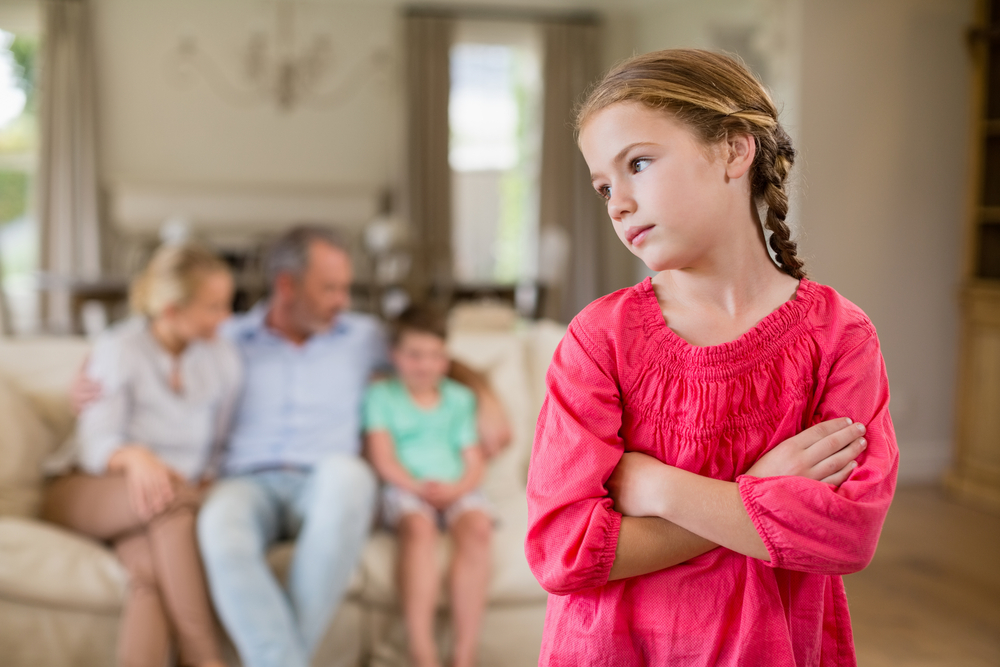What comes to mind when you hear the word « blended » ? For me, it triggers an image of something smoothe, in which all of the ingredients combine to make a single consistency. Well yes, in short, a Smoothie! Unfortunately, experience and studies reveal the true complexity of these family structures.
What is family in the first place?
Before honing in on blended families, it’s worth perhaps posing the question: « What indeed is family ? »
Once upon a time, the question would have elicited a simple response : a mother, a father and their offspring. Today, it has become a thorny question, particularly for policy-makers. The answer that one supplies can determine who can benefit from certain programs and who cannot. What’s more, the definition may reflect, as well as impact, what is considered « normal » and « acceptable » as opposed to what is « deviant » or socially « unacceptable » at a given time, in a given context.
What statistics show us:
Turning to blended families, the French statistical institute (l’INSEE) defines it as an adult couple which lives with one or several children of one but not the other couple member. According to a recent survey of this same agency, 9% of families in France with at least one child under 18 are blended families. In addition, half of these couples include a child or children of the current couple.
A US study revealed that 50% of children live with a biological parent and a stepparent. While 50% of marriages end in divorce, that figure rises to 66% for second marriages involving children from previous marriages. Statistics suggest the difficulties in maintaining this type of family structure.
Understanding the complexity
Conceptual models drawn from family therapy shed some light on the complexity inherent in blended families. In family therapy, a family can be represented as a system made up of several relational subsystems which influence one another. The blended family is characterized by a greater complexity given the number of subsystems when compared to the traditional family. A quick sketch of these include relations between:
-
the stepparent and his or her partner’s child(ren)
-
the child and the other, non-resident biological parent
-
among stepchildren
-
between ex-partners
The fact that in France, the stepparent has no official legal status, adds to this complexity.
Delving behind these relational categories, reveals numerous challenges.
An adult who becomes a parent for the first time as a stepparent is juggling with assuming a parental rôle but one which is often not defined but is « negotiated » with the biological parent. To what extent does the latter offer space and recognition to the partner’s parental rôle ? While defining and negotiating new roles is also part of the transition of all couples into the parenting phase, in the case of existing couples, it may be characterized more often as a negotiation between equals as both are projected into their new roles simultaneously. Not so in the case of blended families where one member arrives having already honed parenting skills and oftentimes, the other not.
It can also take time to gain acceptance from a partner’s children whose attitudes may be influenced, if not, conditioned by those of the partner’s ex.
Tensions may arise between ex-partners and stepparents. Some people can feel threatened by their partner’s continuing contact with their ex which joint parental custody renders almost inevitable and is generally considered as being in children’s best interests. The ex may also have misgivings about the way the stepparent is treating his/her children.
Behind the doors of a family mediation
Many blended families find their way to couples therapy and family mediation as a way to defuse tensions, express fears, clarify roles.
Among the situations which I have received in family mediation, one in particular, comes to mind. Louise and Kevin* came to mediation at Louise’s insistence because their teenager, Nina, had expressed suicidal thoughts, but only to her. Kevin had noticed her more withdrawn behavior but attributed it to just another phase of being a teenager.
Louise and Kevin had been separated for 3 years. At the time, Nina was 11 and her two older brothers, Arnaud and Florent were 14 and 16, respectively. Nevertheless, it was a happy threesome which moved from mom’s home to dad’s every other week. By the time Kevin met Juliette and they then decided to get married, Arnaud and Florent were away from home at university. Juliette had two teenage sons who spent one week with their mom and one week with their dad.
It had been hard for Nina when both of her older brothers left home. They were both very protective of her, she was their little sister. Kevin and his daughter continued to share their common passion for tennis and enjoyed other moments of complicity together but when Kevin met Juliette, all of the attention which she had been receiving from the three men in her life seemed to vanish. She felt utterly lost. What’s more, moving in with Juliette and her two sons, Eliot 14 and William 16, proved very destabilizing. For Nina, Juliette’s sons were loud, annoying and obnoxious.
Kevin was shocked to learn that his daughter could even think of suicide. In mediation, Louise was able to share with Kevin her understanding of Nina’s distress. Together, they were able to grapple with what their daughter was experiencing without Kevin becoming defensive. It became clear for Kevin that he needed to carve out more time for Nina. If having all of the siblings united under one roof didn’t evolve into a healthy environment, the two parents would consider changing their organization but that was not something Kevin could commit to without consulting Juliette. They would also encourage Nina to see a psychologist to help her work through the loss she had been experiencing. At this point, Kevin and Louise felt reassured that they understood Nina’s situation well enough to come up with a roadmap to accompany their daughter. At this point in time, inviting Nina to participate in their mediation didn’t seem necessary but they would keep the idea in mind.
An illustration of just how un-smoothe and complex blended family situations can be.
* To safegard people’s anonymity, the names have been changed.


